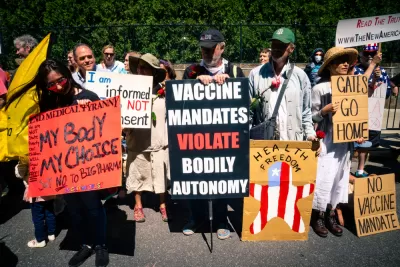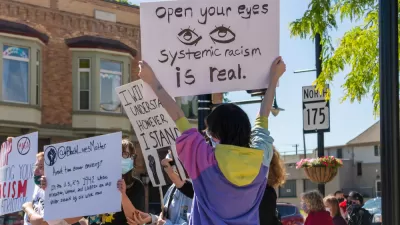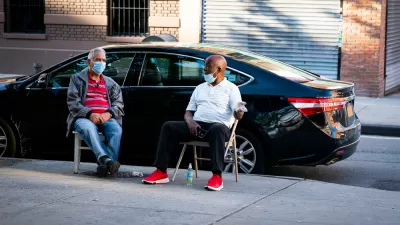For most of the Covid-19 pandemic, Black Americans died at much higher rates than White Americans. That trend has reversed at times during the past year.

The racial and environmental justice issues brought to the forefront by fatality rates from Covid-19 at the beginning of the pandemic, with Black Americans dying at much higher rates than White Americans, has completely reversed in 2022, according to recent analysis by the Washington Post.
"The imbalance in death rates among the nation’s racial and ethnic groups has been a defining part of the pandemic since the start," according to a feature article by Akilah Johnson and Dan Keating. That's no longer the case, however. "Over time, the gap in deaths widened and narrowed but never disappeared — until mid-October 2021, when the nation’s pattern of covid mortality changed, with the rate of death among White Americans sometimes eclipsing other groups," write the duo. The analysis found that the racial disparity vanished at the end of 2021.
As noted in the article, Covid fatality rates in Black Americans are influenced by poor public health outcomes from environmental conditions in Black communities. Black Americans suffer from higher rates of hypertension, diabetes, and obesity than White people—all of which contribute to higher rates of fatalities from Covid-19.
But, Covid-19 is also more likely to kill the unvaccinated, who are more likely to be Republican and White.
As noted in the article, Black Americans aren't the only racial group dealing with the consequences of unhealthy environments during the pandemic: "Cumulatively, Black, Latino and Native American people are 60 percent more likely to die of covid," according to the article.
The percentage could continue to balance if the trends identified in the source article below continue, as they would seem prepared to do with Covid continuing to mutate and vaccination rates continuing to decline.
FULL STORY: Whites now more likely to die from covid than Blacks: Why the pandemic shifted

Planetizen Federal Action Tracker
A weekly monitor of how Trump’s orders and actions are impacting planners and planning in America.

Congressman Proposes Bill to Rename DC Metro “Trump Train”
The Make Autorail Great Again Act would withhold federal funding to the system until the Washington Metropolitan Area Transit Authority (WMATA), rebrands as the Washington Metropolitan Authority for Greater Access (WMAGA).

The Simple Legislative Tool Transforming Vacant Downtowns
In California, Michigan and Georgia, an easy win is bringing dollars — and delight — back to city centers.

The States Losing Rural Delivery Rooms at an Alarming Pace
In some states, as few as 9% of rural hospitals still deliver babies. As a result, rising pre-term births, no adequate pre-term care and harrowing close calls are a growing reality.

The Small South Asian Republic Going all in on EVs
Thanks to one simple policy change less than five years ago, 65% of new cars in this Himalayan country are now electric.

DC Backpedals on Bike Lane Protection, Swaps Barriers for Paint
Citing aesthetic concerns, the city is removing the concrete barriers and flexposts that once separated Arizona Avenue cyclists from motor vehicles.
Urban Design for Planners 1: Software Tools
This six-course series explores essential urban design concepts using open source software and equips planners with the tools they need to participate fully in the urban design process.
Planning for Universal Design
Learn the tools for implementing Universal Design in planning regulations.
Smith Gee Studio
City of Charlotte
City of Camden Redevelopment Agency
City of Astoria
Transportation Research & Education Center (TREC) at Portland State University
US High Speed Rail Association
City of Camden Redevelopment Agency
Municipality of Princeton (NJ)





























